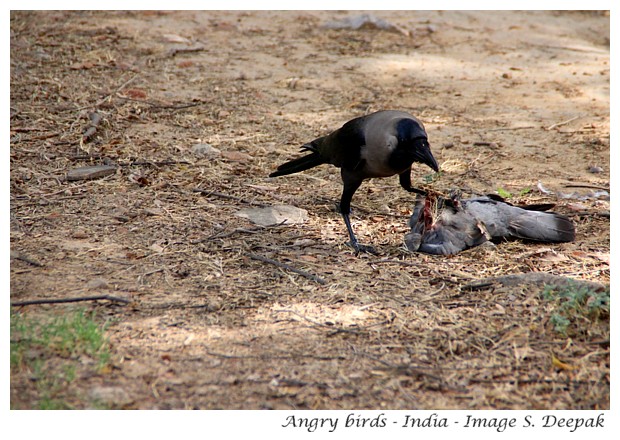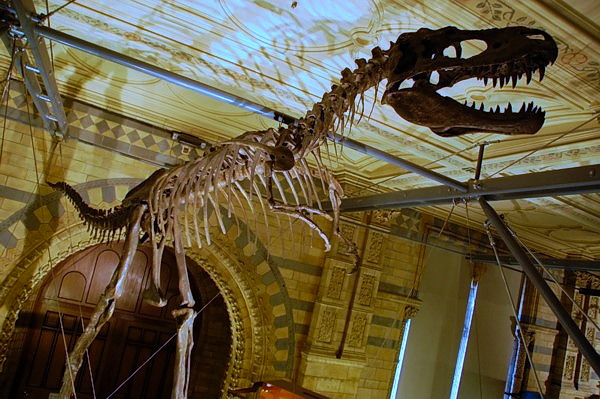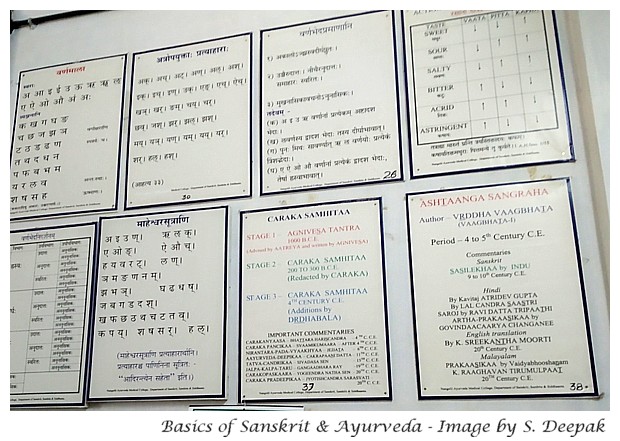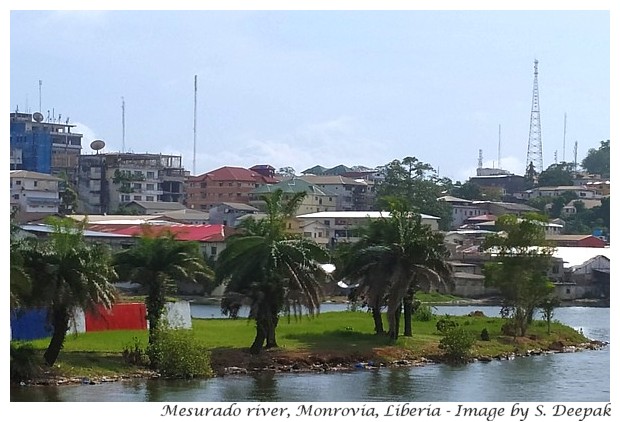Being a part of a Book-Reading Group has substantially changed the way I read some books. First of all it forces me to read books that otherwise I would not read. For example, usually I don't read horror books - they make me too anxious and afterwards I can't sleep. So by myself, I would not have read du Maurier's book.
"The Birds" was not too bad in terms of its horror-impact, probably because I interacted with it differently from the way I usually read books. I read it more critically and consciously, so I felt less immersed in its imagined-world. If you read a horror book without letting yourself get lost in it, probably you enjoy it less and at the same time, it does not affect you in the same way - at least, that's how I felt about it.
As a part of being more critical and aware while reading a book for our group, I also write down notes about the ideas that it provokes, which I rarely do while reading others books. During normal reading, those ideas are fleeting like dreams which I forget the moment I turn the page. By taking notes those fleeting ideas are marked deeper in my mind, and I can reflect about them. That is how this post came around, to share some of those ideas which came to my mind, while reading "The Birds".
The second aspect which struck me was about some of the parallels between the descriptions in the book and the present situation of Covid-19. The first line of the story "On December the third, the wind changed overnight, and it was winter" seemed like a description of the suddenness of the pandemic. The phrases about cold autumn winds sweeping away the yellow-brown leaves, seemed a metaphor of the old and sick persons succumbing to this virus. While, the reactions of the farmer Trigg and his family in the book, reminded me of those who do not believe in the pandemic, think that it is some kind of corporate conspiracy and who refuse to wear masks or take precautions. For example, read the following paragraph from the book: "He tried to tell Mrs. Trigg what had happened, but he could see from her eyes that she thought his story was the result of a nightmare. “Sure they were real birds,” she said, smiling, “with proper feathers and all? Not the funnyshaped kind that the men see after closing hours on a Saturday night?” Mrs. Trigg, “no explaining it, really. You ought to write up and ask the Guardian. They’d have some answer for it. Well, I must be getting on.”
I was also struck by the names of a large number of birds in the story - blue tits, robins, wrens, thrush, blackbirds, house sparrows, pigeons, starlings, black-headed gulls, rooks, crows, jackdaws, magpies, jays, gannets, hawks, buzzards, kestrels, falcons, finches, larks, oystercatchers, redshanks, sanderlings and curlews.
"The Birds" was not too bad in terms of its horror-impact, probably because I interacted with it differently from the way I usually read books. I read it more critically and consciously, so I felt less immersed in its imagined-world. If you read a horror book without letting yourself get lost in it, probably you enjoy it less and at the same time, it does not affect you in the same way - at least, that's how I felt about it.
As a part of being more critical and aware while reading a book for our group, I also write down notes about the ideas that it provokes, which I rarely do while reading others books. During normal reading, those ideas are fleeting like dreams which I forget the moment I turn the page. By taking notes those fleeting ideas are marked deeper in my mind, and I can reflect about them. That is how this post came around, to share some of those ideas which came to my mind, while reading "The Birds".
The Birds by Daphne du Maurier
The story of this book is about millions of birds suddenly turning into killer machines who want to murder humans. The first thought that came to my mind while reading it was about the video-game "The Angry Birds", which was supposed to be very popular some 10 years ago. I am not a fan of videogames and I had never tried playing The Angry Birds, but I knew that it was about birds attacking some pigs who had robbed the bird-eggs. A TV serial and a film were also made about it. So the question in my mind was, did this book (or the film based on it) in any way inspire the videogame makers?The second aspect which struck me was about some of the parallels between the descriptions in the book and the present situation of Covid-19. The first line of the story "On December the third, the wind changed overnight, and it was winter" seemed like a description of the suddenness of the pandemic. The phrases about cold autumn winds sweeping away the yellow-brown leaves, seemed a metaphor of the old and sick persons succumbing to this virus. While, the reactions of the farmer Trigg and his family in the book, reminded me of those who do not believe in the pandemic, think that it is some kind of corporate conspiracy and who refuse to wear masks or take precautions. For example, read the following paragraph from the book: "He tried to tell Mrs. Trigg what had happened, but he could see from her eyes that she thought his story was the result of a nightmare. “Sure they were real birds,” she said, smiling, “with proper feathers and all? Not the funnyshaped kind that the men see after closing hours on a Saturday night?” Mrs. Trigg, “no explaining it, really. You ought to write up and ask the Guardian. They’d have some answer for it. Well, I must be getting on.”
I was also struck by the names of a large number of birds in the story - blue tits, robins, wrens, thrush, blackbirds, house sparrows, pigeons, starlings, black-headed gulls, rooks, crows, jackdaws, magpies, jays, gannets, hawks, buzzards, kestrels, falcons, finches, larks, oystercatchers, redshanks, sanderlings and curlews.
Did the British people in the 1950s know and could identify so many birds? I think that 70 years ago, with lesser urbanisation, there was greater awareness of the nature among people, which is difficult today. It made me think of the night skies of my childhood and the way I used to search for and look at different stars and constellations - now the streetlights and city lights are so strong that even when you do look up at the night sky, you can hardly see any stars. Like the names of the birds in the book, probably I can recite a much larger number of names of stars and constellations compared to an average person from today's generation!
If this book was written today, in which ways it would have been different from the book of Du Maurier? For example, read the following passage about Nat, the hero of the story, finding the sea full of seagulls: "Then he saw them. The gulls. Out there, riding the seas. What he had thought at first to be the white caps of the waves were gulls. Hundreds, thousands, tens of thousands . . . They rose and fell in the trough of the seas, heads to the wind, like a mighty fleet at anchor, waiting on the tide. To eastward and to the west, the gulls were there. They stretched as far as his eye could reach, in close formation, line upon line. Had the sea been still, they would have covered the bay like a white cloud, head to head, body packed to body. Only the east wind, whipping the sea to breakers, hid them from the shore."
In the story, when Nat sees them, he thinks of going "to the call box by the bus stop and ring up the police". Today we do not have "call boxes", we all have our mobile phones, but if you do find the sea full of gulls, what would you do? I bet that 99% of us would click pictures and share them on WhatsApp with their families and friends. A fair number would put them on Facebook or Twitter or Instagram, and many of us would try to get a selfie with those gulls in the background. If the author was writing this story today, probably Triggs and his wife would be shown dying while trying to click a selfie.
The story also made me think of our local popular dish in this part of Veneto region in Italy where I live, called "Polenta e Uzzei", which is corn-cake with roasted small birds. The scene in the book in which burnt dead birds fall down in the fire under the chimney, reminded me of lunches in a friend's home, who loved hunting birds and then roasted them on the hearth along with the corn-cake. I thought that this story was written especially for people who love eating those tiny birds, because it absolves them of the guilt for killing them. I mean, if those birds are actually killers and a danger to the nice humans, it is good that one can kill them and eat them.
After the discussions, I was thinking about how we classify all these different and yet similar genres of books. Classifying them into genres like horror, thriller, fantasy, action and mysteries is difficult because they often overlap. A common element of all these books is the sense of tension and dread which they create. Personally, I like reading action thrillers and some murder mysteries, though I have less patience with Agatha Christie kind of cerebral mysteries. I avoid books with supernatural elements, zombies, splatters and gory violence, while I get bored with books about vampires, werewolves, shape-shifters and most fantasy books.
Some months ago, I had a small Facebook discussion with a friend Francesca, where she had written about Stephen King. She is a well-known translator of books from English to Italian and has translated many Indian authors. I told her that I had never read any book of Stephen King because his books are about horror. She said that King is a master story-teller and the way he develops characters is wonderful, so for her, thinking of his books as mere horror books would be reductive. Thus, I have decided that I should try to read at least one of them before making a judgement. (P.S. Jan 2023 - I have read a couple of Stephen King books and I agree with Francesca, they are very engaging and very much different from what I was imagining!)
While I don't like horror books and films, if their horror is so exaggerated that it become kitsch, I like them. For example, I had liked watching the South Korean film "Train to Busan".
Like "The Birds", this specific genre of horror, where the ordinary things/beings become menacing raises another question about the psychology of their writers in my mind. "The Birds" turns nice little chirping birds into killers. Others have written books which turn clowns, toys, dolls, insects, or even flowers into killers. So, I wonder if these authors have some psycho-pathological problems, which makes them find fear in the beauty? What do you think?
I feel that if it is not exaggerated by over-thinking about the books we read, to some extent becoming a more aware reader and occasionally stopping to reflect on what we have read and to talk about it with others is a good skill for today's fast-running world. I am glad that I am part of our book-readers' group!
If this book was written today, in which ways it would have been different from the book of Du Maurier? For example, read the following passage about Nat, the hero of the story, finding the sea full of seagulls: "Then he saw them. The gulls. Out there, riding the seas. What he had thought at first to be the white caps of the waves were gulls. Hundreds, thousands, tens of thousands . . . They rose and fell in the trough of the seas, heads to the wind, like a mighty fleet at anchor, waiting on the tide. To eastward and to the west, the gulls were there. They stretched as far as his eye could reach, in close formation, line upon line. Had the sea been still, they would have covered the bay like a white cloud, head to head, body packed to body. Only the east wind, whipping the sea to breakers, hid them from the shore."
In the story, when Nat sees them, he thinks of going "to the call box by the bus stop and ring up the police". Today we do not have "call boxes", we all have our mobile phones, but if you do find the sea full of gulls, what would you do? I bet that 99% of us would click pictures and share them on WhatsApp with their families and friends. A fair number would put them on Facebook or Twitter or Instagram, and many of us would try to get a selfie with those gulls in the background. If the author was writing this story today, probably Triggs and his wife would be shown dying while trying to click a selfie.
The story also made me think of our local popular dish in this part of Veneto region in Italy where I live, called "Polenta e Uzzei", which is corn-cake with roasted small birds. The scene in the book in which burnt dead birds fall down in the fire under the chimney, reminded me of lunches in a friend's home, who loved hunting birds and then roasted them on the hearth along with the corn-cake. I thought that this story was written especially for people who love eating those tiny birds, because it absolves them of the guilt for killing them. I mean, if those birds are actually killers and a danger to the nice humans, it is good that one can kill them and eat them.
Classifying Horror, Terror, Fantasy Genres of Books
During the discussions in our reading group, one of my friends, Michela, said that the story was not really a "horror book" but rather a "terror book". I could understand her point because it is that sense of terror and fear which stops me from reading this kind of books.After the discussions, I was thinking about how we classify all these different and yet similar genres of books. Classifying them into genres like horror, thriller, fantasy, action and mysteries is difficult because they often overlap. A common element of all these books is the sense of tension and dread which they create. Personally, I like reading action thrillers and some murder mysteries, though I have less patience with Agatha Christie kind of cerebral mysteries. I avoid books with supernatural elements, zombies, splatters and gory violence, while I get bored with books about vampires, werewolves, shape-shifters and most fantasy books.
Some months ago, I had a small Facebook discussion with a friend Francesca, where she had written about Stephen King. She is a well-known translator of books from English to Italian and has translated many Indian authors. I told her that I had never read any book of Stephen King because his books are about horror. She said that King is a master story-teller and the way he develops characters is wonderful, so for her, thinking of his books as mere horror books would be reductive. Thus, I have decided that I should try to read at least one of them before making a judgement. (P.S. Jan 2023 - I have read a couple of Stephen King books and I agree with Francesca, they are very engaging and very much different from what I was imagining!)
While I don't like horror books and films, if their horror is so exaggerated that it become kitsch, I like them. For example, I had liked watching the South Korean film "Train to Busan".
Like "The Birds", this specific genre of horror, where the ordinary things/beings become menacing raises another question about the psychology of their writers in my mind. "The Birds" turns nice little chirping birds into killers. Others have written books which turn clowns, toys, dolls, insects, or even flowers into killers. So, I wonder if these authors have some psycho-pathological problems, which makes them find fear in the beauty? What do you think?
Conclusions
If it was not for our book-reading group, I doubt if I would have read "The Birds", and even if I would have read it, I doubt that I would stopped for 5 minutes to reflect about it. I would have certainly not written a blog post about it. Slowly, I am becoming aware about how reading books for the group is changing me a reader. I think that if you have to teach creative-writing or literature-appreciation, that would also change the way you interact with books. Is that a good thing? By not allowing ourselves to get immersed in the imaginary worlds dreamt by writers, do we lose our enjoyment? I think that it would be an interesting discussion.I feel that if it is not exaggerated by over-thinking about the books we read, to some extent becoming a more aware reader and occasionally stopping to reflect on what we have read and to talk about it with others is a good skill for today's fast-running world. I am glad that I am part of our book-readers' group!
Note: With this post, I have used pictures of 2 birds which are considered ugly and, in some ways, inauspicious by many persons, though I like them - the crow and the Brazilian Urugu vulture. Both the birds are scavengers, they eat the leftovers, keep our environments clean and live close to human settlements.
***























